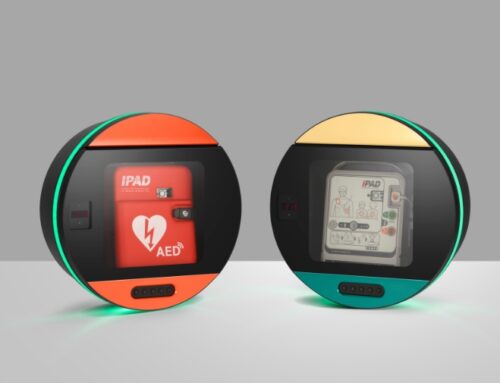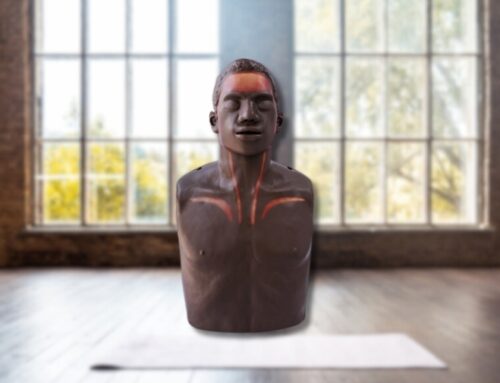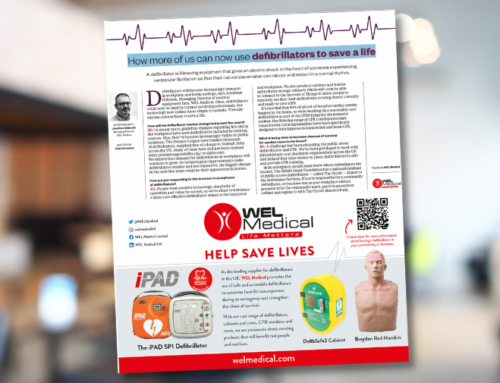[vc_row][vc_column][vc_column_text]Thinking of raising funds for a local defibrillator but not sure where to start? Start here! These are some of the most important things to know when fundraising for a defibrillator.
Some funding options are available
The first thing to know when fundraising for a defibrillator is that you might able to apply for funding – depending on the nature of organisation you want to place the defibrillator in.
For instance, National Lottery funding has previously been used to fund defibs, though usually for large-scale needs and rarely in one-off cases. Either way, that shouldn’t stop you at least investigating if it’s a viable option.
The British Heart Foundation can also offer funding support for a defibrillator in certain cases. However, they won’t offer it to private companies, law enforcement or educational establishments. You also need to be able to offer use of the defib to anyone who needs it, 24/7. The scheme is currently closed during the pandemic, but will be returning in future, so find out more about the BHF’s defib funding award here.
Know your story, stats and facts
[/vc_column_text][vc_empty_space][vc_single_image image=”2635″ img_size=”full”][vc_empty_space][/vc_column][/vc_row][vc_row][vc_column][vc_empty_space][vc_column_text]In a well-known TED Talk, author and speaker Simon Sinek explains how people don’t buy what you do – they buy why you do it. So when fundraising for a defibrillator, being able to give that why in a compelling way will help enormously.
In some cases, this might mean telling the tragic tale of a lost loved one who wasn’t able to get defibrillation treatment. This was the case with Mark King, whose son Oliver sadly suffered a cardiac arrest at school. Incredibly, Mark’s fundraising efforts have recently received a promise from the UK government that every school in the country will have access to an Automated External Defibrillator.
In other cases, your story might be less tinged with sadness, emphasising instead the lifesaving impact a defibrillator can have. This was the case in the accounts we featured in our festive lifesaving stories blog post.
Whether you have a personal story to call upon or not, another powerful way to convey the need for a defibrillator is to know the key facts and stats surrounding cardiac arrests. In fact, they can be so compelling, we’d go as far as saying they’re one of the best things to know when fundraising for a defibrillator.
Key points include:
- – An estimated 30,000 people have a cardiac arrest each year in the UK
- – Each minute without defibrillation during a cardiac arrest lowers a person’s chances of survival by up to 10%
- – The current survival rate for out of hospital cardiac arrests is 10%. With more access to defibrillators, it’s estimated it could be as high as 50%
- – A cardiac arrest is very different to a heart attack – and only the former can be treated with a defibrillator
- – Defibrillation works best when used in conjunction with effective use of CPR
- – Both CPR and defibrillation, can be conducted on adults, children, and infants alike
For more important defib facts and stats, see our blogs ‘Defibrillator Myths Busted’ and ‘Frequently Asked Questions About Defibrillators.’
Where will you place the defibrillator and who will it benefit?
Another key part of your fundraising message should be where you plan to keep the defibrillator and how it will benefit those you’re asking to support you in funding it. An excellent way to store a defib so everyone can access it is in a purposely-built defib cabinet which is rainproof and heated to keep the unit at an operable temperature. These cabinets and the defib they contain can be code locked and registered with national defibrillator network The Circuit. The unlock code can then be found by following the instructions given on the case’s door, which may vary from region to region. See our blog ‘The Many Places You Can Keep A Defibrillator’ for more defib storage ideas.
Explore your best crowdfunding options
Now you have a compelling why, and can also convey to potential donors where you’ll be placing the defibrillator, you’re all set to actually start fundraising.
There are a LOT of different crowdfunding options these days, so one of the big things to consider when fundraising for a defibrillator is which one to use in setting up an online ‘home’ for your fundraiser. (We’d definitely advise you only pick one – creating more just dilutes your message and gives a misleading picture to potential donors of your campaign’s successes).
Popular crowdfunding sites including JustGiving, GoFundMe, MightyCause and Crowdfunder, which has a handy guide on crowdfunding for a defibrillator that’s full of helpful fundraising information for defibs.[/vc_column_text][vc_empty_space height=”16px”][vc_single_image image=”2636″ img_size=”full”][vc_empty_space height=”16px”][vc_column_text]
Reach out to your network
Once you’ve set up your crowdfunding page you can start sharing it with anyone and everyone you know – via every channel open to you. In our experience, you might be surprised how generous people can be when it comes to such a worthwhile cause – especially when approached personally, either in-person or via a direct message.
Likewise, giving regular social media updates on your progress is also a great way to further tell your fundraising story. And with the average number of Facebook friends for a personal account standing at 338, you might be surprised how quickly your donations total can rocket up!
Old-style in-person fundraising is always effective, too
Our final thing to consider when fundraising for a defibrillator is the very thing you probably first thought of when you read the word ‘fundraising.’
In-person fundraising can mean everything from collecting change on the street (assuming you have a permit, of course), to running a fundraiser like a sporting event, summer fete, raffle, bake sale, comedy night, or even the humble car wash.
As we mentioned above, remember to capture pictures, videos and other media of everything you do and broadcast it to your followers on social channels, as well as keeping your crowdfunding page updated with your progress. It will all help to bring you closer to your goal of getting a brand-new AED for your local community.
Helping you choose the right AED and other lifesaving equipment
At WEL Medical we distribute what we believe are the most cost-effective and intuitive publicly accessible defibrillators, defb cases and CPR training equipment available on UK shores: the iPAD range, DefibSafe cabinets and Brayden first aid manikins.
To learn more about which iPAD is right for you, visit our first time buyer guide for defibs and our piece on the difference between semi-automatic and fully automatic AEDs. or get in touch to have us talk you through your options.[/vc_column_text][vc_empty_space][/vc_column][/vc_row][vc_row][vc_column][vc_column_text]
Related articles
- Choosing the Right Defibrillator
- What Happens When You Use A Defibrillator?
- Frequently Asked Questions About Defibrillators
- Fully Automatic vs Semi-Automatic AEDs – What’s The Difference?
- Christmas Miracles: Lifesaving Festive Stories
[/vc_column_text][/vc_column][/vc_row]





